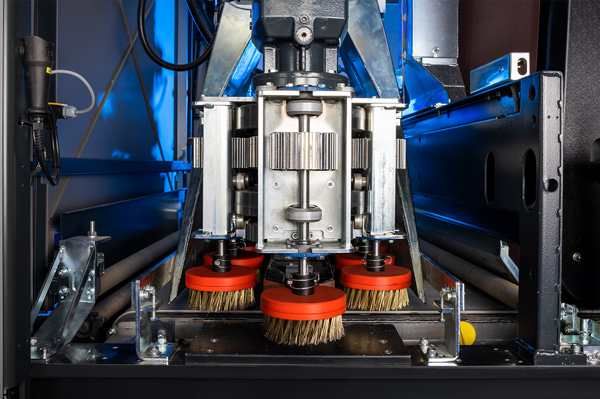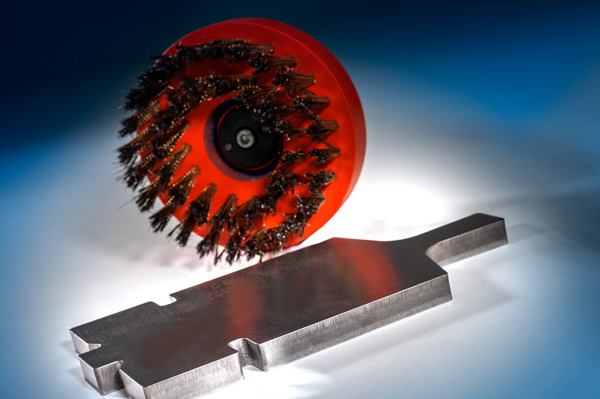Oxid removal – this is how you perfect your laser part with profiRounder by Heesemann
Oxide removal is always necessary when laser cutting parts without nitrogen that shall be coated or welded afterwards. If the sheet metal parts are powdered or painted with an oxide layer, the oxide layer together with the coating will fall off even with a slight force. The quality of the weld seam also suffers if parts with an oxide layer are welded.
Alternatively, the oxide layer can also be prevented by using laser cutting with nitrogen. For reasons of economy, however, this is only reluctantly used for material thicknesses beyond 4 mm.
Different options for oxide removal
In steel service centers that are processing heavy plate, it is the common method that the adhering oxide layer is removed using shot blasting technology. Unfortunatelly the blasting technology often is not available in companies that process precision sheet metal. In addition, too much energy is introduced into the part, so that thinner parts warp. For this reason, the oxide layer must be removed in another way on thinner sheets. Usually the deburring machine is then used to professionally remove oxide.


Oxid removal: Wire brushes with cord wire is the most common method
The most common tool for removing oxide is the wire-trimmed disc brush. Cord wire is used here, which withstands the alternating bending load accordingly.
The height of the brushes is adjusted so that they dip a little more than 50% of the workpiece thickness into the material and thus completely remove the oxide layer in 2 passes
At Heesemann, this tool is used on the RUT unit. The kinematics of the unit ensures that all edges are processed equally intensive, so that no “shadow areas” arise where oxide remains, as this cannot be avoided with cross-brushing and planetary units due to the process.
Bei Heesemann wird dieses Werkzeug auf dem RUT Aggregat eingesetzt. Durch die KinematIQ des Aggregates ist sichergestellt, dass alle Kanten gleich intensiv bearbeitet werden, sodass keine „Schattenstellen“ entstehen, an denen dann doch noch Oxid stehen bleibt, wie dies bei verfahrensbedingt nicht vermeidbar ist beim Querbürsten und bei Planetenaggregaten.


